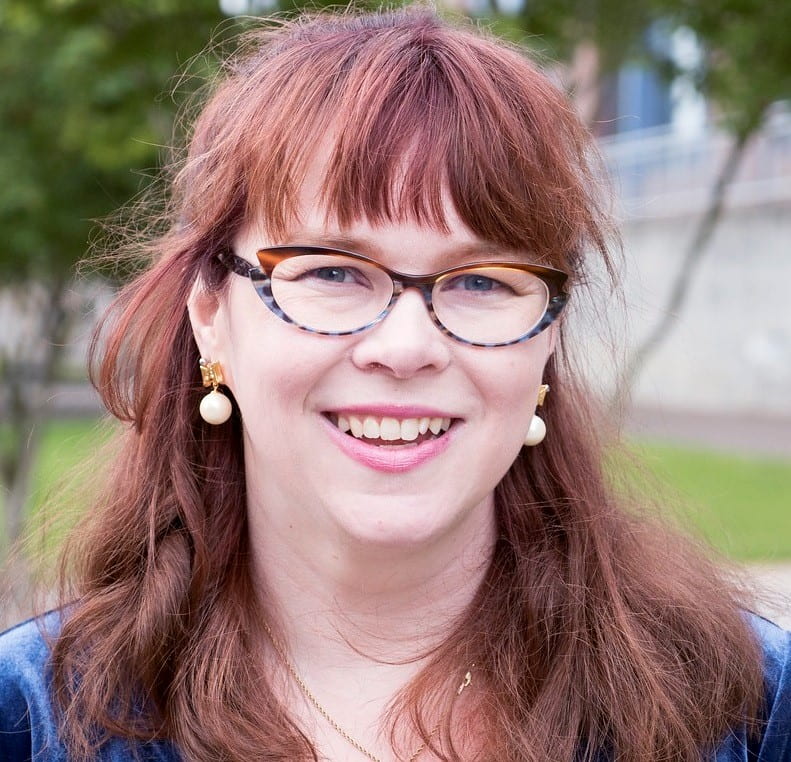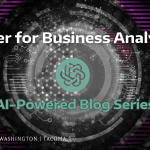Word cloud generated from sentiment analysis of tweets during COVID-19 outbreak. Bergman/UW
Behind the scenes with Dr. Margo Bergman: Helping Washington State Economist’s Office find a new measure for consumer confidence.
By Megan Tan | Jun 2, 2020
We are constantly surrounded by uncertainty, but most of us fall into little patterns of predictability. We go out with friends on Friday night, do our laundry on Sunday morning, stop by the gym after work on Tuesday afternoon. We fashion these schedules around us that tell us what to do and when and they make us feel safe. It’s predictable.
“Knowing” what will happen in the future gives us a sense of security. It allows us to make plans and guides our decisions. That is what the Consumer Confidence Index (CCI) does for the economy. The CCI is a measure of how optimistic (or pessimistic) consumers are about the state of the economy. It lets manufacturers know how much to produce, banks anticipate lending activity, and retailers know how much product to buy.
But just as COVID-19 has turned our neat little schedules on their heads and left us guessing as to what the following months will bring, it has done the same with the CCI and left businesses clueless as to what steps to take next. As the state prepares to re-open, the office of the Washington State Economist has been searching for a means to determine a local CCI, to provide a measure to guide public policy. This is the exact question UW’s Dr., Margo Bergan, is looking to answer through her latest project. What is the consumer confidence?
Margo Bergman, Ph.D., MPH. Milgard School of Business – UW Tacoma. Unknown
When asked about the goal of her project, Dr. Bergman replied, “The goal is to develop a real-time, localized measure of consumer confidence that can be used during this time period to determine how people are feeling about the economy.”
While the old method of calculating the CCI did a decent job, it doesn’t work now. The issue, as she describes it is that, “Traditional measures, which involve a lot of questions about spending patterns, won’t be accurate generally, and may not apply to local conditions.”
You can’t tell how someone feels about spending money by measuring things like eating out, traveling, or other purchases if they aren’t allowed to do those things. We used to look at people’s actions to determine how they felt, but now that those actions are restricted, what can we look at?
Their words.
Dr. Bergman has been working with Twitter data to determine consumer’s sentiment toward the economy. When asked about any advice she had for working with this type of data, she said, “Working with Twitter data requires you make a lot of choices about which words to keep in, and which words to remove. Make sure you keep track of those choices and be able to justify them.”
In response to what she thought when she first learned about the project she replied, “I thought it would be challenging, but a great addition to the literature and methodology of measuring consumer confidence. This literature hasn’t changed much over the years and coming up with new ways to determine what the consumer might be thinking is very important in the modern age.”
She hopes her work can, “help guide policy makers in their choices about state and local programs to support both public health and the economy.” She also believes that, “if we can support their work, then we can help reduce uncertainty on both sides about what the consumer is thinking, and what should be done to help guide the local economy back to its pre-COVID conditions…. Consumer spending represents ~70% of the US economy. If people are unwilling or unable to spend money, then the GDP will suffer.”
Historically, the CCI was calculated at a national level but now she says, “The national conditions are so varied, in terms of the state economic centers, the response to the public health measures, and all the factors that relate to the consumer confidence, that having a national measure is just too broad.”
While what we felt in Washington used to generally reflect what people felt in Oregon, Texas, and across the nation, no longer is that the case. With governors left to decide what is best for their state, we are left with a hodge-podge of shelter-in-place orders, bans, and social distancing requirements.
But, distilling the ever-growing numbers of tweets into a subset that represents our local community has been challenging. Dr. Bergman stated, “I was worried that we wouldn’t be able to get as focused a data as we need, and that has been somewhat true. Many of the tweets we are found were of other parts of the country, or even other countries, but I’m still working on refining the data cleaning algorithms to process them to get a local sample.”
What she said when asked about the one thing that would help her with this project was, “I would love to have people turn on more location data, but I understand the privacy concerns.” Though she is unlikely to get that helping hand, she is getting help from the City of Puyallup, who she has partnered with in order to answer a question that has stemmed from this project, “whether economic uncertainty, or public health uncertainty, would contribute more strongly to people’s choice to reenter the economy when they could.” She has applied for a grant from the UW Population Health Initiative to study this question.
In a time plagued by uncertainty, with phrases like “I can’t believe this is happening” becoming a near daily occurrence, it’s reassuring to know people like Dr. Bergman are reaching into the chaos and finding answers through data. Hopefully, her findings can shine a light on the future and give us a sense of security. However, if we’re honest with ourselves, were we really that certain and then COVID-19 came and made us uncertain, or has the uncertainty always been there and we chose not to look, chose until we had no choice?
Maybe, when life goes back to “normal”, instead of letting our schedules and plans lull us into believing we know what is going on, we’ll remember that uncertainty lurks around us, just like it always has. It didn’t start with COVID-19 and it won’t end [if or] when it leaves. Maybe instead of looking away, we’ll face the uncertainty and question it, and maybe, like Dr. Bergman, those questions will lead to answers.
Special thanks to the Analytics Innovation Club’s WSE Team that did the data collection, Google Analytics, “and helped me think things through”: Drew Gordon (PM), Chris Dinsmore (APM), Zhijun Ma, Chao Zhang, Megan Tan, and Avery Neims.







